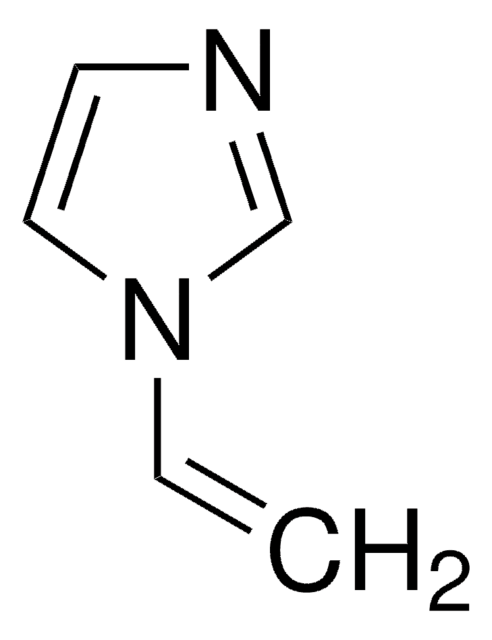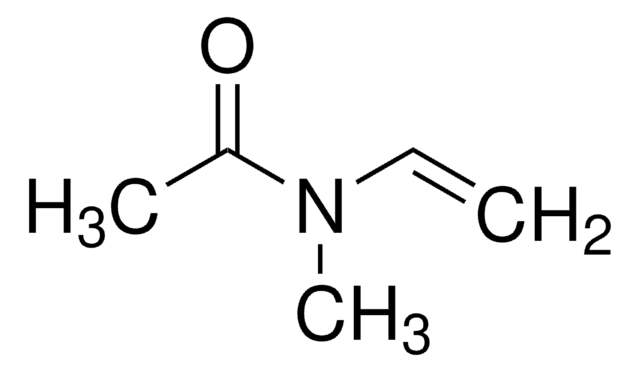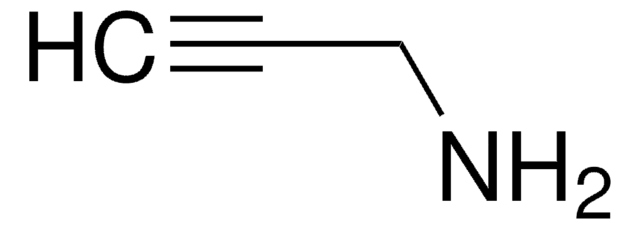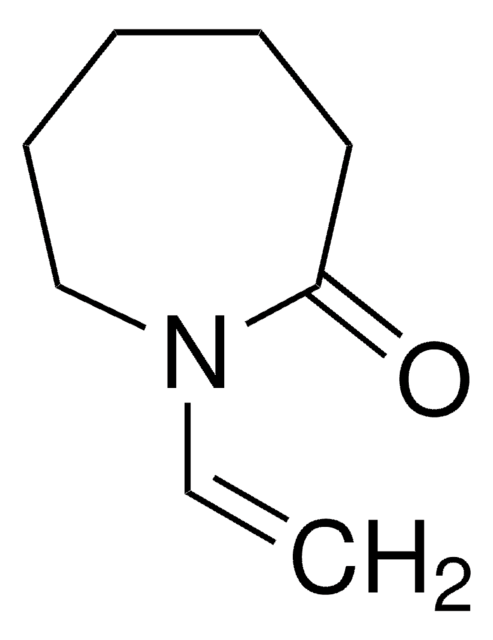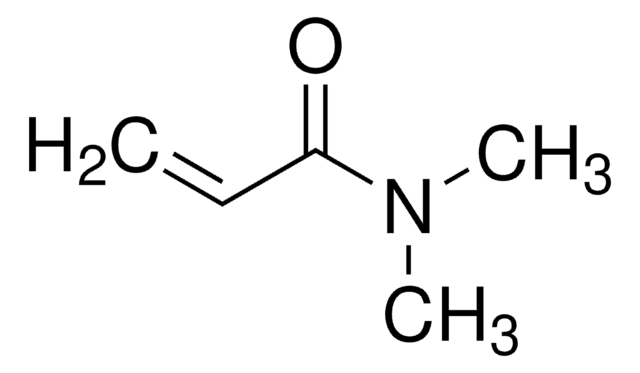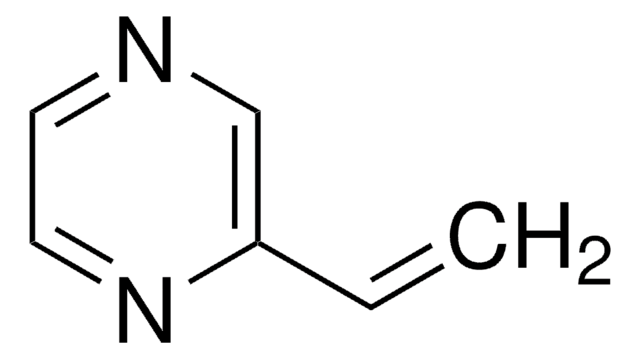Kluczowe dokumenty
447331
N-Vinylformamide
98%
Synonim(y):
N-Ethenylformamide, N-VFA, N-Vinyl-N-formylmethanamine
About This Item
Polecane produkty
ciśnienie pary
~0.1 mmHg ( 25 °C)
Próba
98%
zawiera
25-55 ppm 4-Hydroxy-TEMPO as stabilizer
współczynnik refrakcji
n20/D 1.494 (lit.)
bp
210 °C (lit.)
mp
−16 °C (lit.)
gęstość
1.014 g/mL at 25 °C (lit.)
temp. przechowywania
2-8°C
ciąg SMILES
[H]C(=O)NC=C
InChI
1S/C3H5NO/c1-2-4-3-5/h2-3H,1H2,(H,4,5)
Klucz InChI
ZQXSMRAEXCEDJD-UHFFFAOYSA-N
Opis ogólny
Zastosowanie
- As a monomer to synthesize poly (N-vinylformamide) (PNVF) based hydrogels that can be used for controlled drug delivery.
- To synthesize an aqueous binder for Li4Ti5O12(LTO) anodes in lithium-ion batteries. This helps to enhance the stability and specific capacity of the electrodes.
- To fabricate biocompatible coating for medical devices.
- To fabricate polypropylene membranes for continuous removal of organic micropollutants from water. N-vinylformamide enhances the adsorption affinity of the membrane by inducing multiple hydrophilic and hydrogen bonding sites on the surface.
Hasło ostrzegawcze
Danger
Zwroty wskazujące rodzaj zagrożenia
Zwroty wskazujące środki ostrożności
Klasyfikacja zagrożeń
Acute Tox. 4 Oral - Carc. 2 - Eye Dam. 1 - Repr. 1B - Skin Irrit. 2 - STOT SE 3
Organy docelowe
Respiratory system
Kod klasy składowania
6.1C - Combustible acute toxic Cat.3 / toxic compounds or compounds which causing chronic effects
Klasa zagrożenia wodnego (WGK)
WGK 1
Temperatura zapłonu (°F)
215.6 °F
Temperatura zapłonu (°C)
102 °C
Wykazy regulacyjne
Wykazy regulacyjne dotyczą głównie produktów chemicznych. Można w nich podawać ograniczoną liczbę informacji na temat produktów niechemicznych. Brak wpisu oznacza, że żaden ze składników nie znajduje się w wykazie. Użytkownik odpowiada za zagwarantowanie bezpiecznego i zgodnego z prawem stosowania produktu.
EU REACH SVHC Candidate List
Wybierz jedną z najnowszych wersji:
Masz już ten produkt?
Dokumenty związane z niedawno zakupionymi produktami zostały zamieszczone w Bibliotece dokumentów.
Klienci oglądali również te produkty
Nasz zespół naukowców ma doświadczenie we wszystkich obszarach badań, w tym w naukach przyrodniczych, materiałoznawstwie, syntezie chemicznej, chromatografii, analityce i wielu innych dziedzinach.
Skontaktuj się z zespołem ds. pomocy technicznej